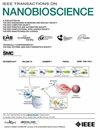Biosynthesis of Silver and Zinc Oxide Nanoparticles Using Platostoma palustre Aqueous Extract for Biomedical Applications
IF 4.4
4区 生物学
Q1 BIOCHEMICAL RESEARCH METHODS
引用次数: 0
Abstract
This study highlights the structural, antioxidant, antibacterial, and anti-inflammatory properties of silver nanoparticles (AgNPs) and zinc oxide nanoparticles (ZnONPs), synthesized successfully using Hsiantsao aqueous extract as an eco-friendly alternative to traditional chemical methods. The antioxidant activity of the nanoparticles was assessed through DPPH, ABTS, and FRAP assays. The XRD spectra of biosynthesized silver nanoparticles (AgNPs) and zinc oxide nanoparticles (ZnONPs) are showed size average of 7 nm and 24-44 nm, respectively. AgNPs demonstrated notable antioxidant properties, achieving 70%±0.68 DPPH scavenging and 75%±0.82 ABTS inhibition at 0.1 mg/mL. ZnONPs showed superior efficacy, with 47.43%±0.68 DPPH scavenging and 80%±0.82 ABTS inhibition, as well as robust reducing power in the FRAP assay, comparable to standard ascorbic acid. Antibacterial assays revealed that AgNPs were particularly effective against Gram-positive bacteria, while ZnONPs exhibited activity against both Gram-positive and Gram-negative strains. Additionally, ZnONPs demonstrated exceptional anti-inflammatory potential, inhibiting protein denaturation by up to 91% at 0.01 mg/mL. These structural and functional characteristics position AgNPs and ZnONPs as promising candidates for biomedical applications. These findings underscore the versatility of AgNPs and ZnONPs in advancing modern healthcare solutions.生物医学应用中利用palostoma palustre水萃取物生物合成氧化银和氧化锌纳米粒子。
本研究重点研究了利用仙骚水萃取物成功合成的银纳米粒子(AgNPs)和氧化锌纳米粒子(ZnONPs)的结构、抗氧化、抗菌和抗炎特性,作为传统化学方法的环保替代品。通过DPPH、ABTS和FRAP测定纳米颗粒的抗氧化活性。生物合成的银纳米粒子(AgNPs)和氧化锌纳米粒子(ZnONPs)的XRD谱分别显示出平均尺寸为7 nm和24-44 nm。AgNPs表现出显著的抗氧化性能,在0.1 mg/mL浓度下,对DPPH的清除率为70%±0.68,对ABTS的抑制率为75%±0.82。ZnONPs的DPPH清除率为47.43%±0.68,ABTS抑制率为80%±0.82,在FRAP实验中,ZnONPs的还原能力与标准抗坏血酸相当。抗菌实验显示AgNPs对革兰氏阳性菌特别有效,而ZnONPs对革兰氏阳性菌和革兰氏阴性菌都有活性。此外,ZnONPs表现出特殊的抗炎潜力,在0.01 mg/mL时抑制蛋白变性高达91%。这些结构和功能特征使AgNPs和ZnONPs成为生物医学应用的有希望的候选者。这些发现强调了AgNPs和ZnONPs在推进现代医疗保健解决方案中的多功能性。
本文章由计算机程序翻译,如有差异,请以英文原文为准。
求助全文
约1分钟内获得全文
求助全文
来源期刊

IEEE Transactions on NanoBioscience
工程技术-纳米科技
CiteScore
7.00
自引率
5.10%
发文量
197
审稿时长
>12 weeks
期刊介绍:
The IEEE Transactions on NanoBioscience reports on original, innovative and interdisciplinary work on all aspects of molecular systems, cellular systems, and tissues (including molecular electronics). Topics covered in the journal focus on a broad spectrum of aspects, both on foundations and on applications. Specifically, methods and techniques, experimental aspects, design and implementation, instrumentation and laboratory equipment, clinical aspects, hardware and software data acquisition and analysis and computer based modelling are covered (based on traditional or high performance computing - parallel computers or computer networks).
 求助内容:
求助内容: 应助结果提醒方式:
应助结果提醒方式:


